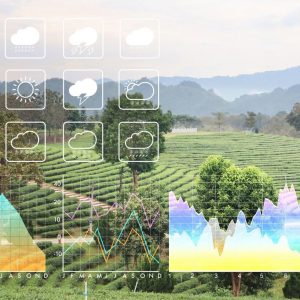Oil refiners may soon find themselves the target of an effort to cut greenhouse gas emissions in the northeast US using a cap-and-trade program.
A number of northeast US states are revving up to create a cap-and-trade program to cut CO2 emissions from cars and trucks.
This effort could end up creating the largest carbon market in the US and serve as a landmark regional effort to address climate change.
Work on the program is still in its early stages, but it could end up making the states’ refiners and fuel suppliers responsible for the CO2 emissions from gasoline and diesel used by drivers in the region.
Nine northeast states and the District of Columbia say they plan to use cap and trade to address CO2 emissions from transportation: the largest source of emissions in the region. They are working through a broader 12-state coalition known as the Transportation and Climate Initiative.
Under the hood, a cap-and-trade program is fairly straightforward. The states collectively set a limit (cap) on the total amount of CO2 emissions they will allow each year, which gets stricter over time, and they distribute allowances that represent those emissions. To provide some flexibility, the states allow companies covered by the cap to trade the allowances among one another. This allows supply and demand to set the price of CO2 and ensures that companies that cut emissions quickly can benefit financially by selling their extra allowances to those that need them.
For many of the states, this is not their first time working with cap-and-trade. Many are already members of the Regional Greenhouse Gas Initiative (RGGI), a decade-old program that limits CO2 from the electricity sector. California has its own cap-and-trade program, which covers transportation and electricity, and could provide a model for the northeast market. And much of Europe is covered by the largest cap-and-trade program for greenhouse gases in the world.
The emerging transportation program would dwarf the size of the RGGI program and could rival the scale of California’s economy-wide market.
Once the states put out their proposal later this year, each will need to decide individually whether to adopt the final plan and get the market underway. They also want to make sure the program that can accommodate new members in the future, as a larger market would reduce overall costs and lead to greater CO2 reductions.
The transportation program is in the slow lane at the moment and it will likely be about three years until trading could actually begin. But once it shifts into high gear, the states will have more than half of their total emissions covered by a cap-and-trade market and could be racing toward a lower-carbon future.
Written by: Sam Brock, Reporter on Sep 12, 2019 at Argus
Original source and weblink is here: https://www.argusmedia.com/en/blog/2019/august/22/vehicles-to-be-the-major-vehicles-for-co-2reduction?utm_source=ZEPower&utm_medium=referral&utm_content=blog&utm_term=emi&utm_campaign=AMER-EMD-2019-09-EMI-Air%20Daily%20Content%20Series%202019






